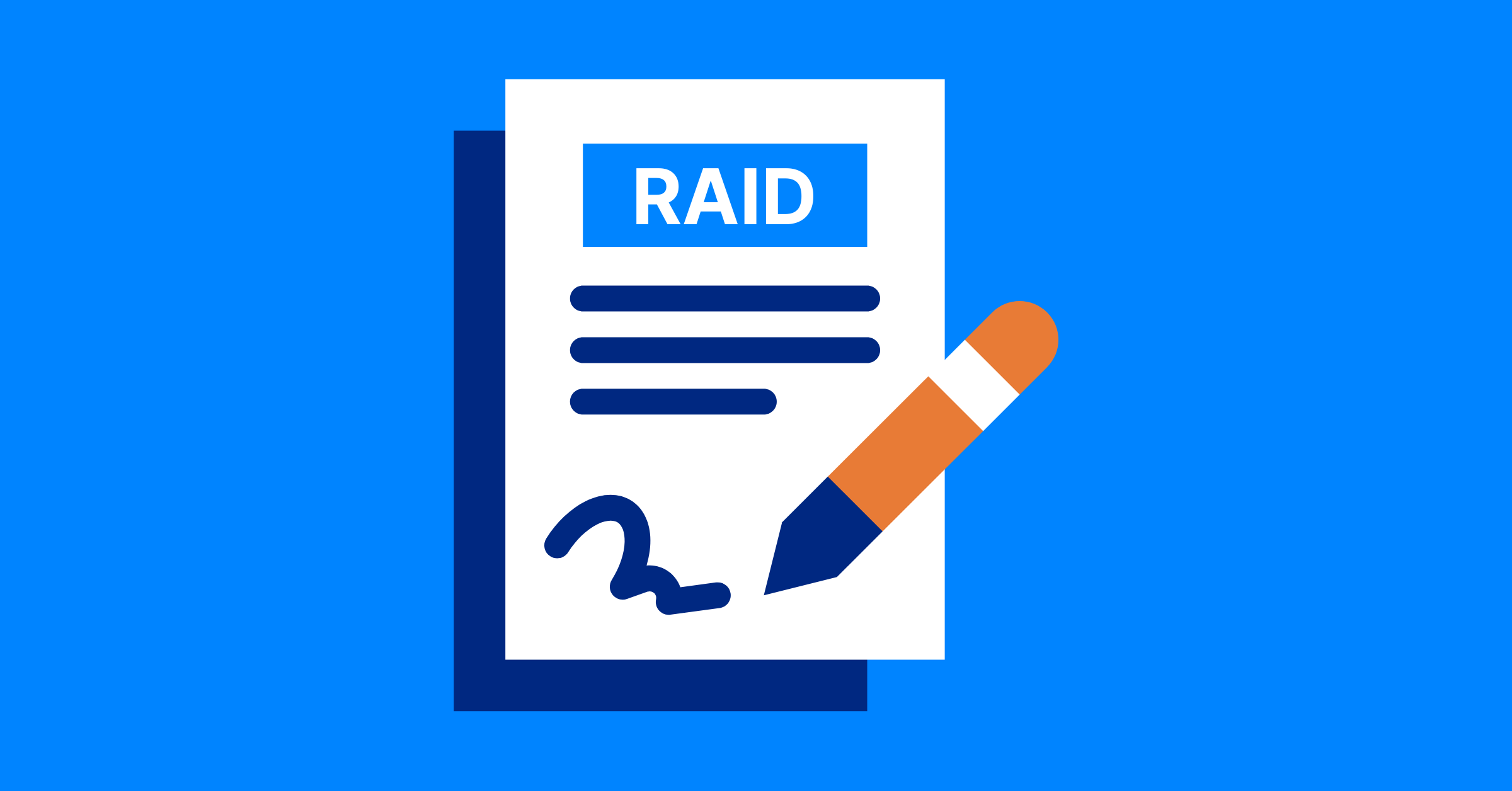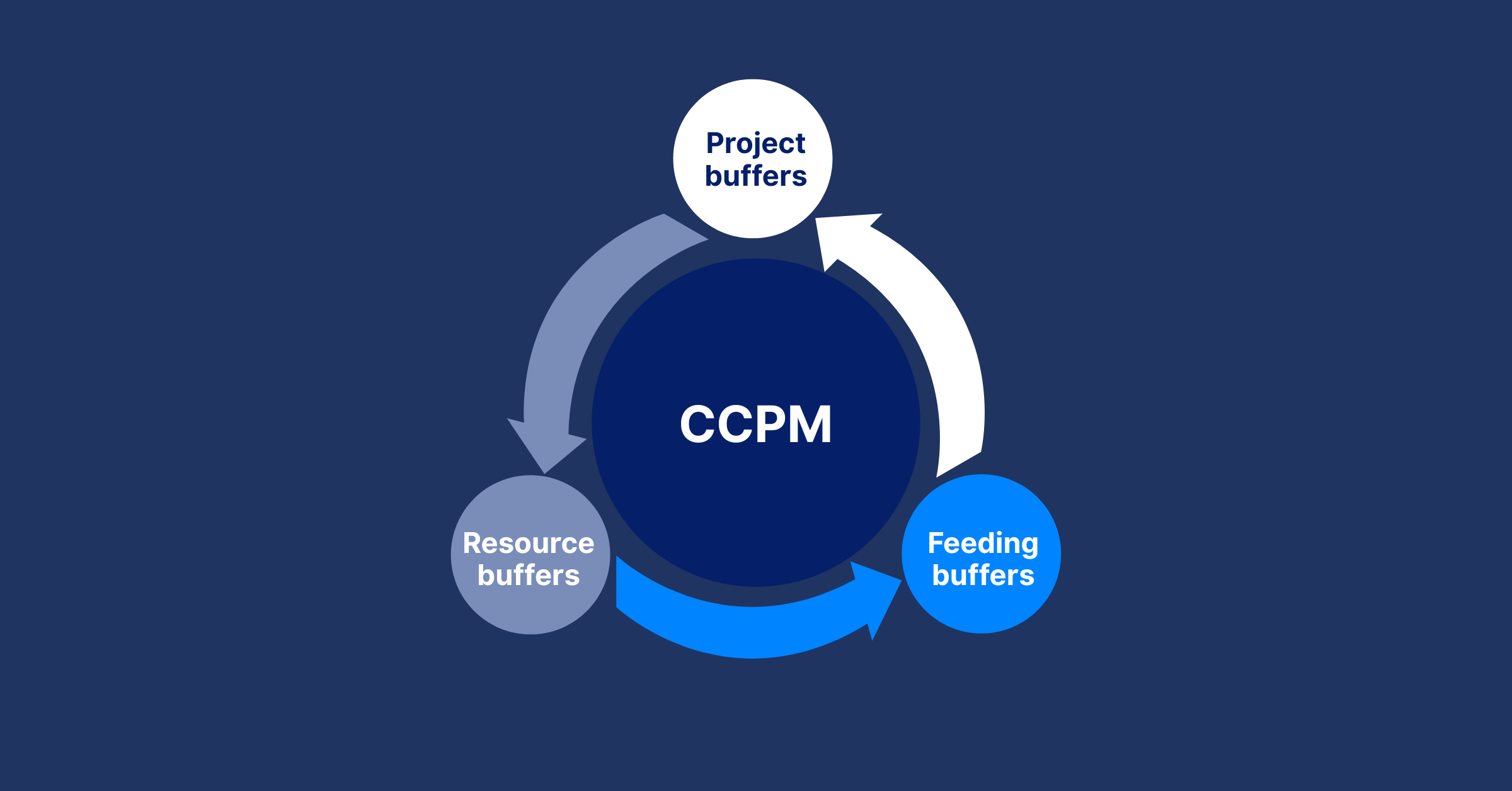What Makes a Successful Team in an Agile Environment with Shifting Goals
Learn what makes a successful team in Agile when goals shift. Explore key traits, tools, and tips to stay focused, adaptable, and aligned in fast-paced projects.
Agile environments are built on flux. Goals shift as customer feedback, fresh data, or strategic pivots reshape priorities. Some teams crumble under this uncertainty, losing focus or morale. Others adapt with precision, turning change into a catalyst for better outcomes.
What makes a successful team in this dynamic landscape? It’s their ability to stay aligned, communicate transparently, and pivot swiftly while rooted in a shared purpose. This article explores the qualities, strategies, and leadership practices that empower Agile teams to excel when goals evolve. Packed with team management tips and project management insights, it provides a roadmap to harness change for success.
Let’s dive into how what makes a good team that can thrive in Agile’s ever-shifting world.
Why Goals Shift in Agile Teams
Agile methodologies like Scrum and Kanban prioritize iteration, feedback, and continuous improvement. This flexibility fuels innovation but ensures goals are rarely static. Common reasons for change include:
- Evolving customer needs: User testing might reveal a demand for simpler navigation over complex features in an app.
- Sprint reflections: Retrospectives uncover smarter ways to deliver value, prompting goal adjustments.
- Business realignments: A competitor’s new product or a shift in company strategy can redirect focus.
The challenge is maintaining momentum when the target keeps moving. Successful teams don’t resist change; they use it to refine their work. For example, a team building a subscription platform might pivot from advanced analytics to streamlined onboarding after user feedback highlights friction. The key is adapting intelligently, balancing agility with discipline to deliver consistent value.
Core Qualities To Make a Successful Agile Team
To navigate shifting goals, teams need a robust foundation. These five qualities, grounded in effective team management tips, drive resilience and collaboration.
1. Clarity of Vision
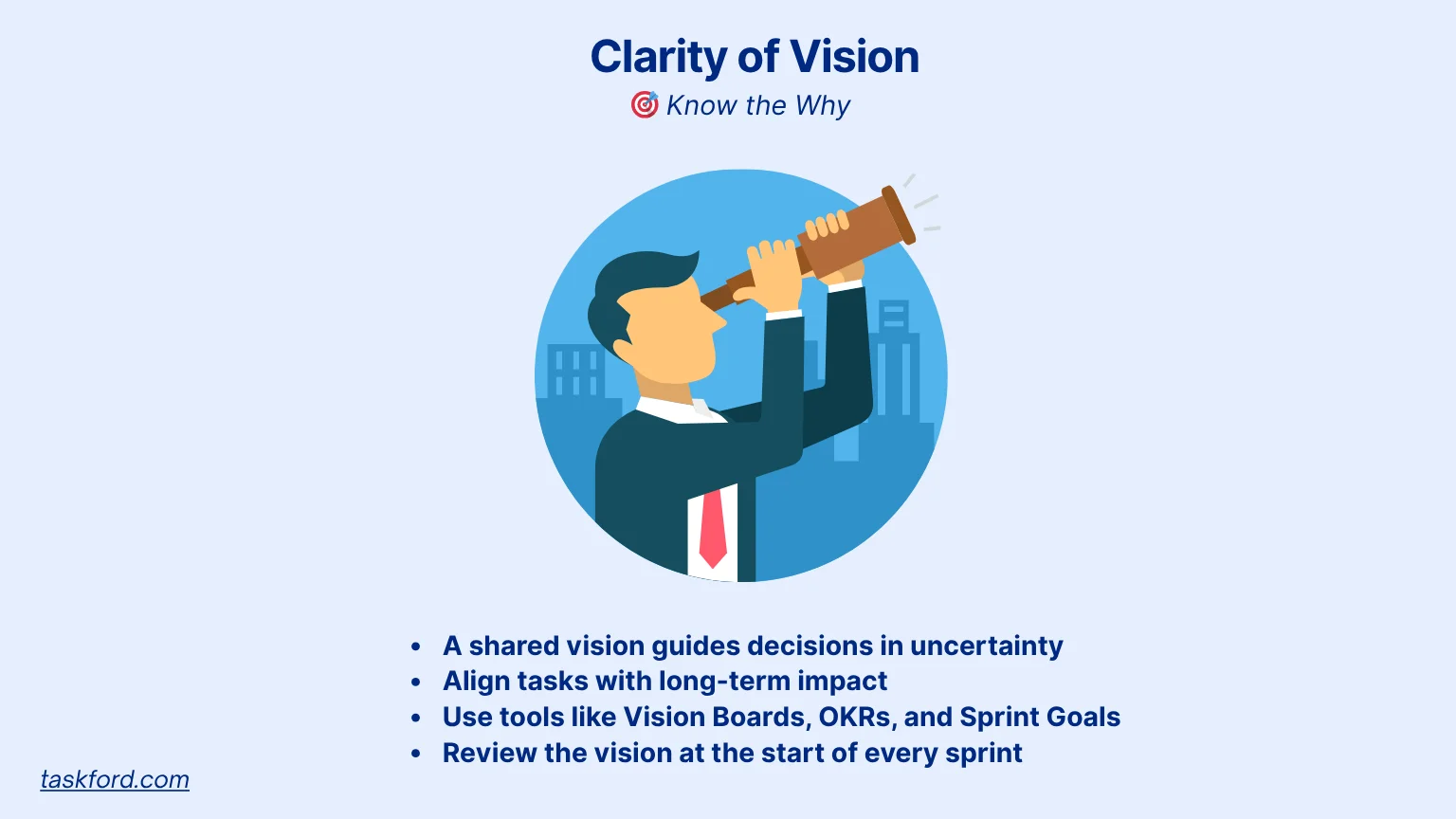
A shared vision acts as a compass. When short-term goals fluctuate, understanding the project’s “why” guides decisions. For instance, a team developing a telehealth platform might face shifting feature requests but stays focused on improving patient access to care.
This clarity helps teams make trade-offs that align with long-term objectives, avoiding wasted effort on misaligned tasks.
Tools to maintain vision:
- Product Vision Board: A visual guide outlining the project’s purpose, audience, and value proposition.
- OKRs (Objectives and Key Results): Measurable goals tied to strategic outcomes, like increasing user retention by 20%.
- Sprint Goals: Clear, sprint-specific objectives, such as launching a core feature.
Team management tip: Kick off each sprint with a vision review. Discuss how current tasks support the broader mission to keep everyone aligned.
2. Strong Communication Habits
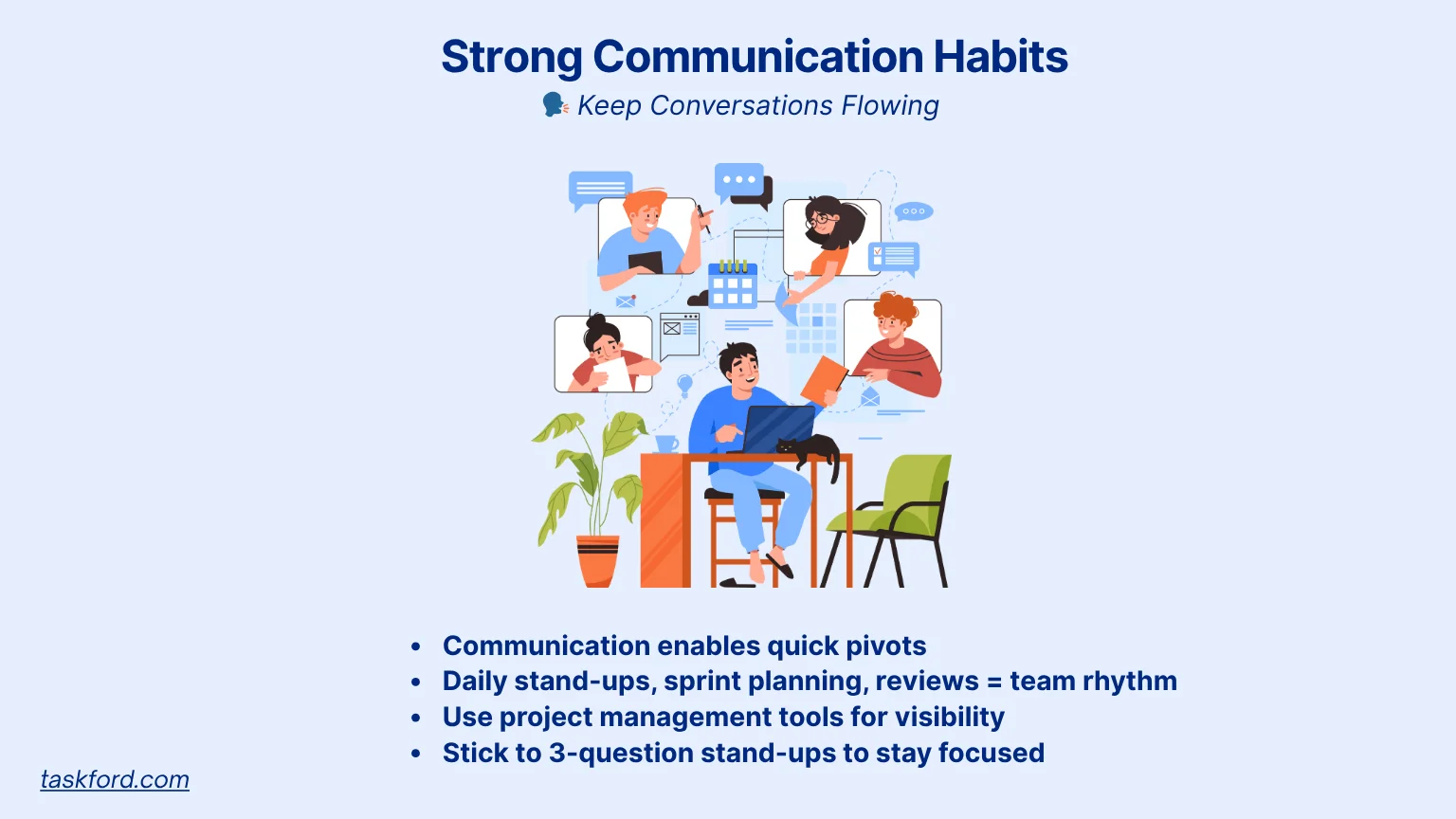
Communication is the lifeblood of Agile teams. When goals shift, rapid and clear updates prevent confusion. Daily stand-ups, sprint planning, and reviews create a rhythm for collaboration.
Kanban boards or project management tools like TaskFord provide real-time visibility. For example, a fintech team might use a Kanban board to track tasks, ensuring developers and product managers see priority shifts instantly.
Team management tip: Streamline stand-ups with three questions:
- What did I accomplish yesterday?
- What’s my focus today?
- Are there any blockers?
This keeps discussions tight and surfaces issues quickly.
3. Psychological Safety
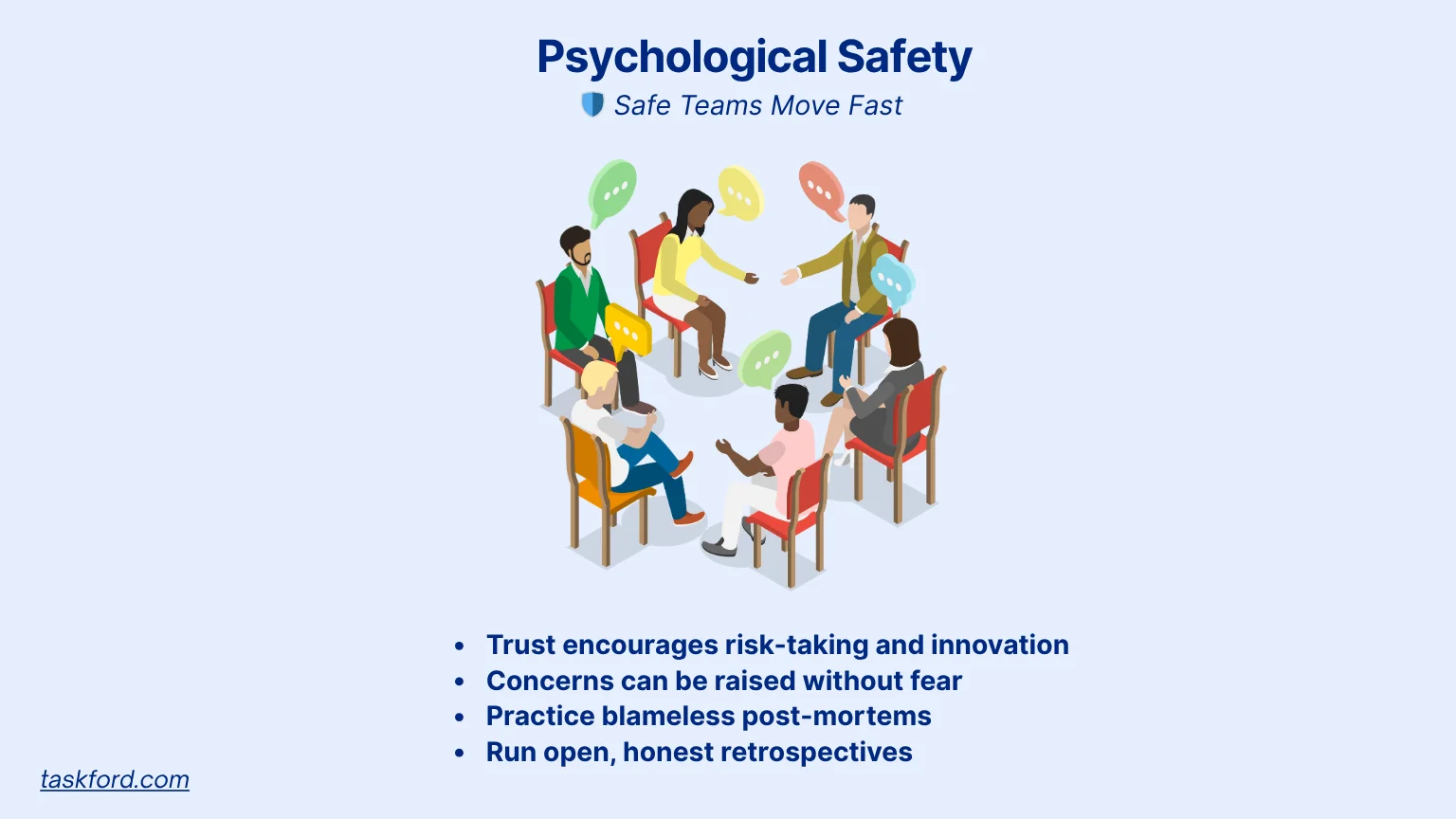
Trust unlocks adaptability. Psychological safety lets team members raise concerns, challenge assumptions, or propose changes without fear. For instance, a QA engineer might flag a feature’s misalignment with user needs, sparking a discussion that saves weeks of rework.
High-trust teams innovate faster because they’re unafraid to experiment or admit errors.
Project management insight: Foster safety through:
- Blameless post-mortems: Analyze setbacks to find solutions, not scapegoats.
- Open retrospectives: Use prompts like, “What surprised us this sprint?” to encourage candid feedback.
4. Adaptability and Continuous Learning
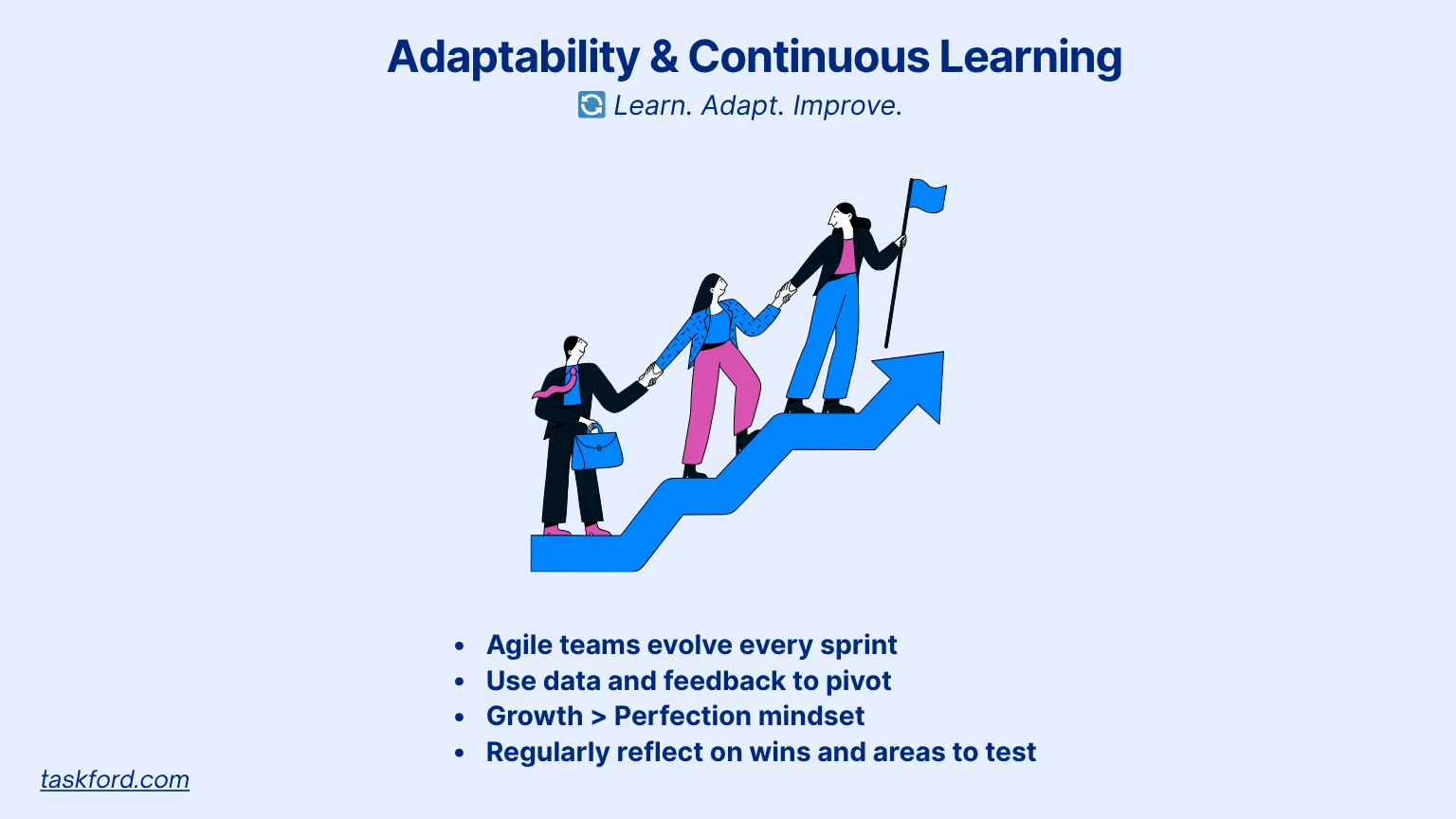
Top Agile teams learn as fast as they deliver. Each sprint offers data, feedback, and insights to refine their approach. A culture that values growth over perfection fosters resilience.
For example, a marketing team running a social media campaign might test ad visuals, track engagement rates, and pivot to high-performing content based on analytics.
Team management tip: In retrospectives, discuss:
- Data insights (e.g., user metrics or sprint velocity).
- One success to replicate.
- One improvement to test next sprint.
This builds a habit of continuous evolution.
5. Empowered Decision-Making
Empowered teams act decisively without waiting for approvals. Autonomy reduces delays and boosts ownership. For instance, a product team might simplify a feature based on usability tests, without needing a director’s nod.
Leaders should set strategic boundaries but trust teams to handle tactical choices.
Project management insight: Define clear decision-making scopes. Teams can own sprint-level decisions, like sprint backlog prioritization, while leadership tackles big-picture shifts, like budget reallocations.
How to Stay Effective When Goals Shift in Agile Environment
Adapting to change requires practical strategies. These approaches help teams stay focused and deliver value in a fluid Agile environment.
1. Keep the Vision Steady, Not the Plan
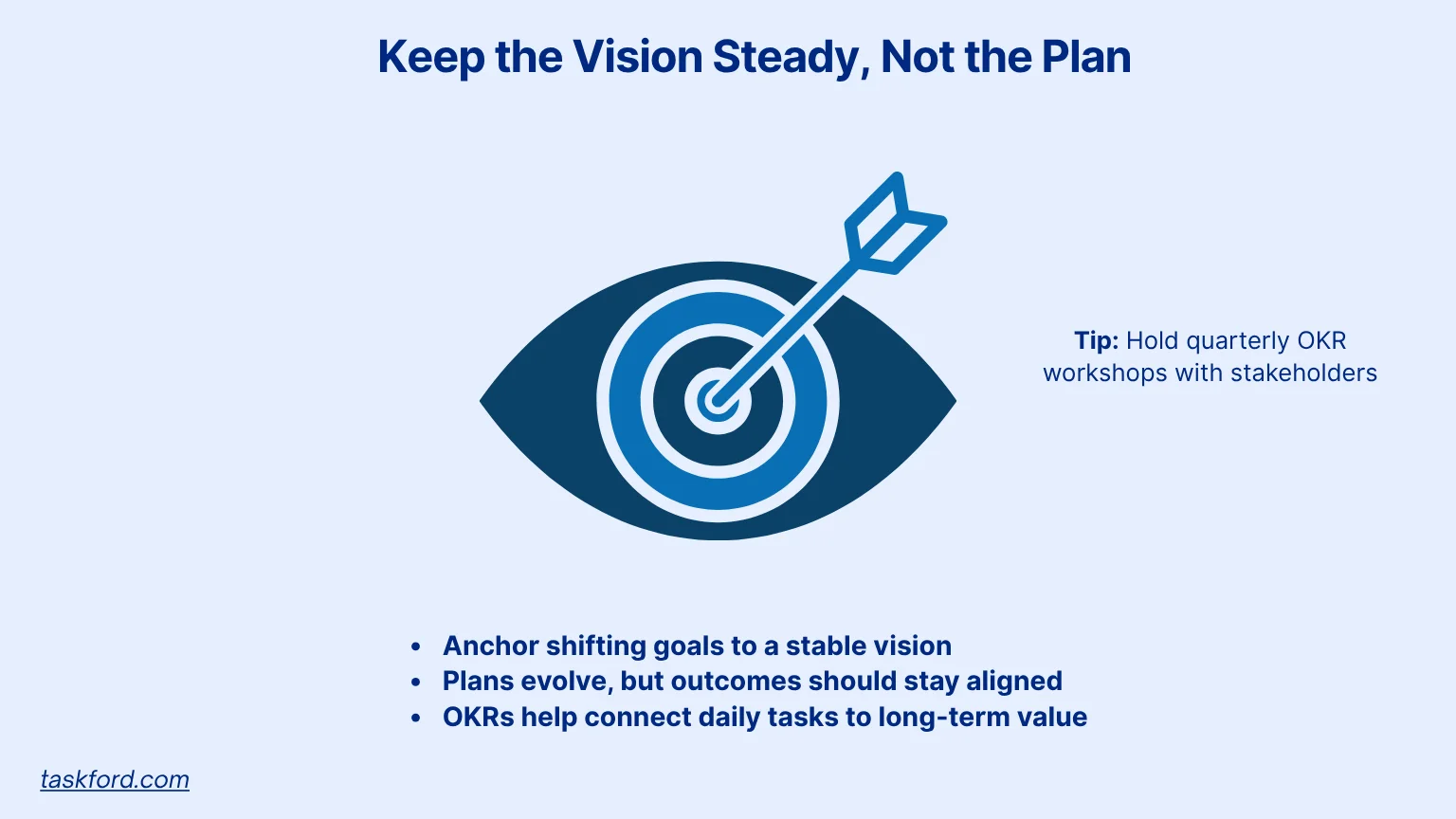
Plans are malleable; purpose is fixed. A steady vision ensures teams don’t drift when goals change. For example, an e-commerce team might tweak checkout features but stay focused on reducing cart abandonment.
Regular OKR reviews align tasks with business outcomes, like increasing conversions by 15%.
Team management tip: Hold quarterly OKR workshops with stakeholders. Discuss how sprint goals support the broader mission to maintain alignment.
2. Use Root Cause Analysis for Recurring Issues
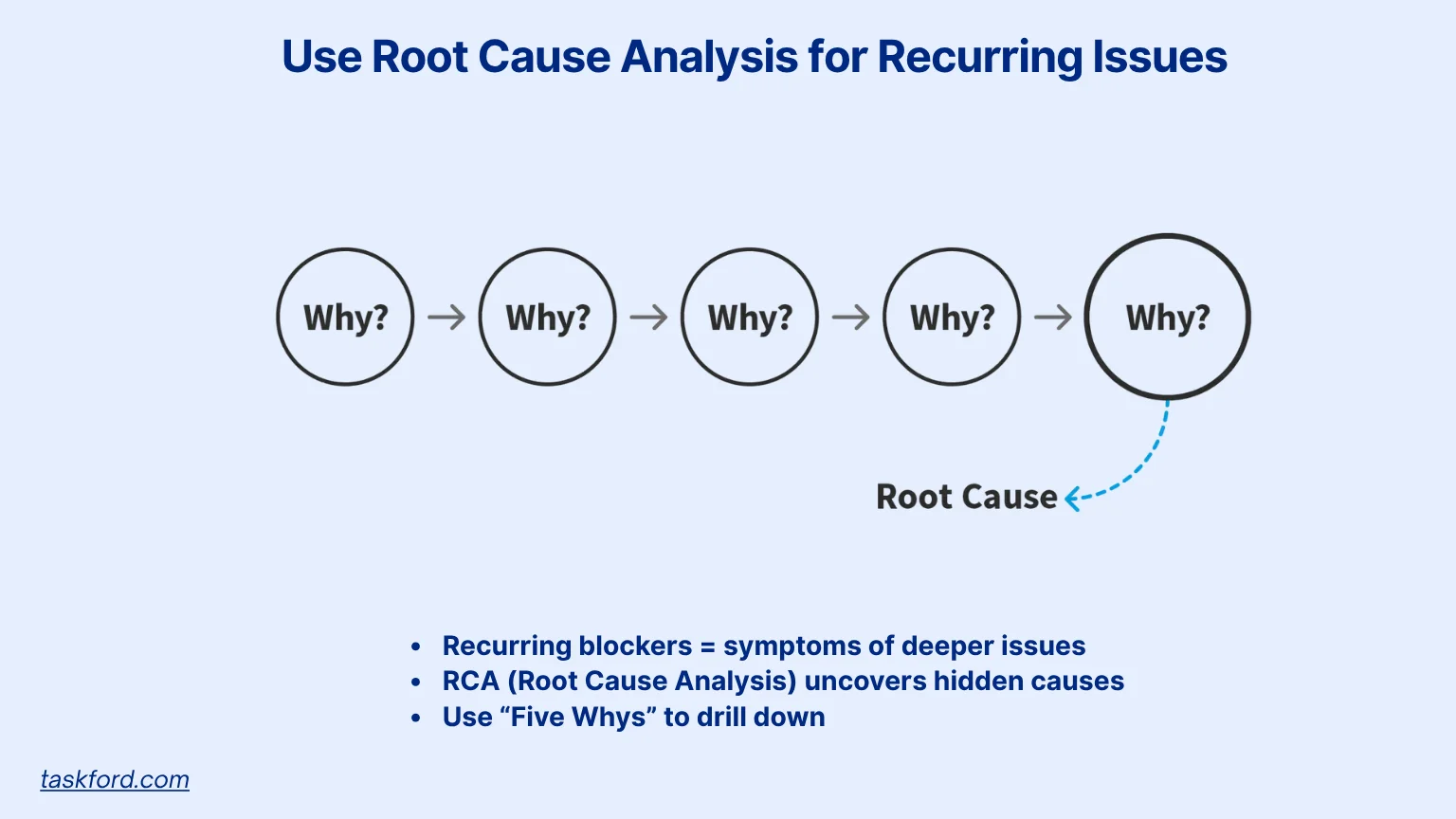
Persistent blockers, like unclear requirements or delayed feedback, erode progress. RCA (Root Cause Analysis) digs beyond symptoms to fix underlying issues.
For example, if a team repeatedly misses deadlines, RCA might reveal vague user stories. The solution could be stricter backlog refinement or clearer acceptance criteria.
Project management insight: Use the “Five Whys” technique:
- Ask “why” a problem persists (e.g., “Why are deadlines missed?”).
- Repeat five times to uncover the root cause (e.g., “Poorly defined tasks”).
- Implement a targeted fix, like mandatory story reviews before sprints.
3. Maintain Transparency Through Visibility
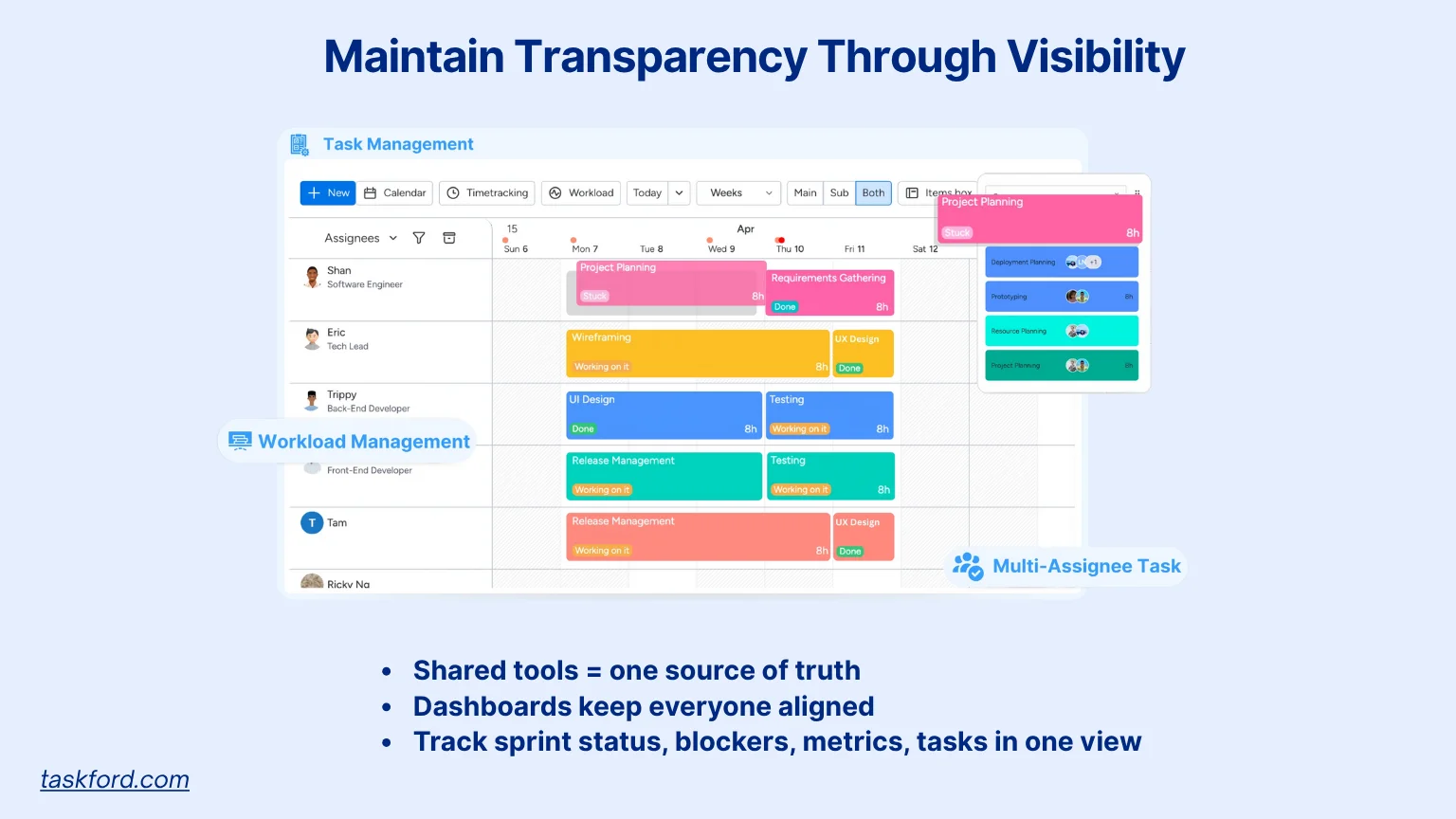
Transparency prevents misalignment. Shared tools provide a single source of truth for priorities and progress. For instance, a gaming team might use a comprehensive project management and resource planning platform like TaskFord to track tasks, ensuring designers and coders see updates instantly.
A centralized dashboard showing sprint progress, blockers, and metrics keeps everyone aligned.
Team management tip: Build a dashboard tracking:
- Current sprint status (tasks completed vs. planned).
- Key metrics (e.g., defect rates or user adoption).
- Upcoming priorities.
This ensures clarity across roles, from developers to executives.
4. Balance Agility with Focus
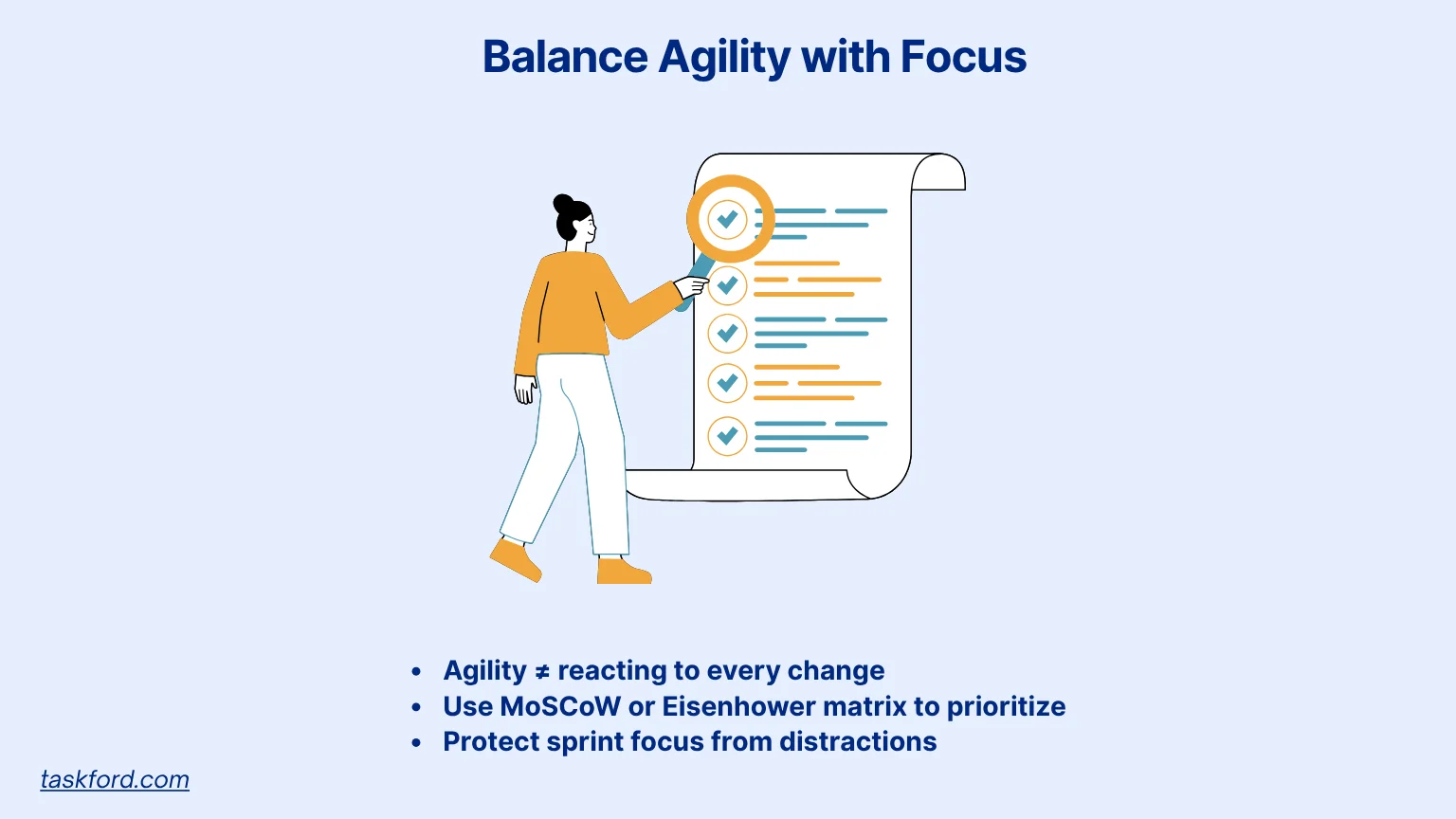
Change is constant, but chasing every shift causes chaos. Prioritization frameworks help teams focus on what matters.
- MoSCoW method: Sort tasks into Must-have, Should-have, Could-have, or Won’t-have.
- Eisenhower Matrix: Prioritize tasks based on urgency and importance to maximize impact.
Protect each sprint’s focus to deliver results without disruption.
Project management insight: Set one clear sprint goal during planning. Reject mid-sprint changes unless they’re critical to avoid scope creep.
Leadership Practices for Team Stability
Leaders shape how teams handle change. These practices foster resilience and empowerment.
- Provide context: Explain why goals shift. If a feature is cut due to market shifts, share the reasoning to build buy-in.
- Embrace uncertainty: Honesty about unknowns fosters trust. For example, say, “We’re refining the roadmap, but here’s our current focus.”
- Celebrate adaptability: Recognize teams that pivot well. Highlight a team that quickly adjusts to new data to reinforce agility.
- Keep channels open: Enable direct feedback via weekly check-ins or shared Slack channels. This prevents miscommunication between teams and stakeholders.
Pitfalls that Prevent a Successful Team and Solutions
Shifting goals can derail even strong teams. Below are five common pitfalls, their impacts, and detailed solutions to avoid them, enriched with practical examples.
Goals change too frequently
Impact: Teams lose direction, leading to confusion and burnout. For example, a team tasked with building a payment feature might face daily priority shifts, causing frustration and missed deadlines. Solution: Set stable sprint goals during planning. Limit mid-sprint changes to critical issues, like a major bug or regulatory shift. For instance, a team might agree to focus on a single checkout feature for two weeks, rejecting non-urgent requests to maintain focus.
Poor communication
Impact: Misalignment wastes effort. A design team might build a feature unaware that developers reprioritized, leading to rework. Solution: Use shared tools like Jira or Confluence for real-time updates. Implement asynchronous check-ins, such as daily Slack updates, to keep remote teams aligned. For example, a team could post task status updates in a dedicated channel to ensure visibility.
Ignoring recurring issues
Impact: Repeated problems, like delayed stakeholder feedback, cause delays and frustration. A team might wait weeks for approvals, stalling sprints. Solution: Apply RCA regularly. In retrospectives, identify patterns (e.g., late feedback) and address root causes, like unclear stakeholder roles. One team solved this by assigning a dedicated liaison to gather feedback before sprint planning.
Lack of trust
Impact: Low trust stifles innovation. Team members might hesitate to suggest changes, fearing criticism, leading to missed opportunities. Solution: Build psychological safety with open dialogue. Use anonymous retro tools, like FunRetro, to encourage honest input. A team that struggled with silent retros introduced anonymous surveys, uncovering concerns that led to better processes.
Unclear vision
Impact: Without a clear purpose, teams drift. A content team might produce mismatched campaigns if the project’s goal isn’t defined. Solution: Define and revisit OKRs monthly. For example, a team clarified their vision as “increase user engagement by 25%” and used it to guide content decisions, reducing drift.
Proactively tackling these pitfalls ensures teams stay productive and motivated.
Example Of What Makes a Successful Team: Pivoting with Precision
Consider a product team building a user-facing dashboard for a travel booking platform. Mid-sprint, user testing reveals that a planned analytics widget, intended to show detailed trip statistics, confuses users who prefer a simple itinerary view.
The team responds strategically:
- Data review: They analyze heatmaps and user feedback, confirming the widget’s low value.
- Collaborative pivot: In a 30-minute huddle, they redefine the user story, prioritizing a clean itinerary display for the next sprint.
- Transparent communication: The product owner updates stakeholders via a shared Confluence page, explaining the shift with data-backed reasoning.
- Empowered execution: Developers adjust the sprint backlog, focusing on the new feature without needing executive approval.
This pivot succeeds because the team’s vision (simplifying travel planning) is clear, communication is open, and autonomy is high. The result is a streamlined itinerary feature that boosts user satisfaction by 30%, earning praise from stakeholders. This example shows how strong Agile practices turn disruptions into wins.
Questions that Make a Successful Agile Team
Assess your team’s readiness for change with these questions:
- Do we understand our long-term goal clearly?
- Do we share updates openly when priorities shift?
- Can we make small decisions without approval?
- Do we reflect and improve after every sprint?
If you answer “no” to more than one, make those gaps your next sprint goal. Building these strengths creates a team that thrives in Agile Project Management’s dynamic environment.
Conclusion
Agile success lies in mastering adaptation, not avoiding change. What makes a good and successful team? They anchor to a clear vision, communicate transparently, learn continuously, and act with autonomy.
Methods like OKRs, RCA, and prioritization frameworks transform uncertainty into opportunity. Leadership that provides context and fosters trust amplifies these strengths. Ultimately, a team’s maturity is measured by how well they evolve, not just what they deliver.
Learn more
- What Is Project Management: A Beginner’s Comprehensive Guide 2025
- Agile Project Management vs Waterfall - What's The Difference?
- Agile Project Management Sprint Cycle - From Planning to Retrospective
Making work simpler,
smarter, and more connected
Join our waitlist and be notified first.

Related Blog
Subscribe for Expert Tips
Unlock expert insights and stay ahead with TaskFord. Sign up now to receive valuable tips, strategies, and updates directly in your inbox.




